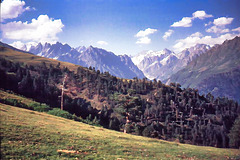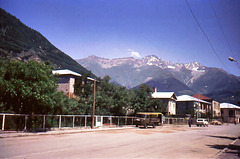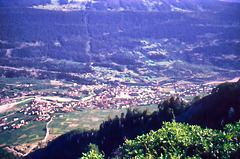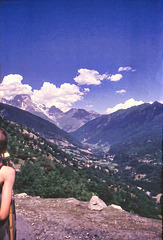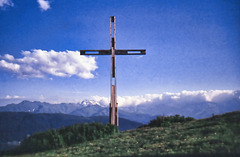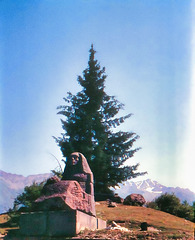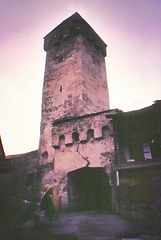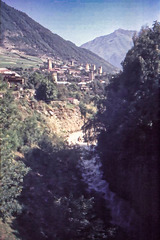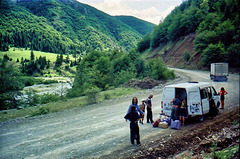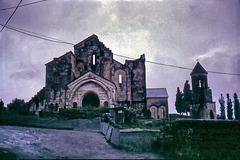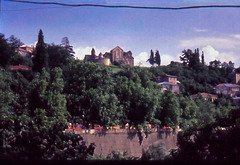m̌ ḫ's photos
Svaneti
| |
|
|
The mountain river
| |
|
|
The Mestiachala River is fed by the Chalaadi Glacier, which is in turn fed by the mountain streams Bzhedukhi, Chatini, and Dalaqori. Hiking to the glacier allows visitors to witness the fascinating interplay between the glacier, the river, and the surrounding landscape. The trail to the glacier takes hikers through a beautiful mixed forest, a rocky path, and finally, a walk on large moraine stones near the glacier.
This is Caucasus
| |
|
|
The Upper Svaneti region is known for its unique medieval defensive tower houses and picturesque mountain scenery. The region is situated on the southern slopes of the central Caucasus Mountains and is surrounded by 3,000–5,000 metres (MASL) peaks, with four of the 10 highest peaks of the Caucasus located in the region. The Svaneti Range, which is almost as high as the main Caucasus range, separates the Upper and Lower Svaneti regions. Some of the prominent peaks in the Upper Svaneti region include Mount Shkhara, the highest mountain in Georgia at 5,201 meters, Tetnuldi at 4,974 meters, Mount Ushba at 4,710 m, Ailama at 4,525 m, as well as Lalveri and Latsga. The region is also home to the Enguri River Valley and the township seat of Mestia. The most popular climbing peaks in Svaneti include Mt. Laila, Tetnuldi, Banguriani, and Ahalgazrdoba.
Streets of Mestia (with power lines)
| |
|
|
According to the search results, the government installed power lines in 2012 to light up even the remotest villages in Upper Svaneti, including Mestia. Before the installation of power lines, there were constant outages of power and non-existent roads in Mestia. However, the internet quality in Mestia is not stable, and most people sign up for basic packages that offer a minimum speed. There is no cable internet, only satellite, which is more expensive and not stable. The modern center of Mestia consists of buildings from different eras and styles with Svan towers in between.
Trekking view at Mestia
| |
|
|
|
Svaneti is a hiker's paradise, offering rugged and wild landscapes, isolated villages with iconic stone towers, and a distinct language and culture that still thrives today. Whether you're looking for multi-day backpacking trips or half-day adventures, Svaneti provides no shortage of breathtaking views and off-the-beaten-path travel opportunities.
Caucasus - Svaneti
| |
|
|
|
Svaneti is a region located on the southern slopes of the Caucasus Range in Georgia known for its picturesque landscapes, thousand-year-old defensive towers, and intense indigenous people. The area has a rich history and culture, with the first recorded information dating back to 63 BC. The Svans have a reputation as fierce warriors. Many powerful empires tried to conquer the region, but it remained unconquered until the mid-19th century when the Russians exerted control. Svaneti's isolation has shaped its identity and historical value. It is considered the highest populated region in the Caucasus, where pagan and Christian rituals, customs, and traditions merge into a new, unique look. Gold has been mined in Svaneti since ancient times, and legends tell of gold-horned bulls and a Golden-haired goddess. The government is implementing a plan to turn the medieval mountain zone into a tourist magnet, so the region has seen more change in recent years than the past thousand. Overall, Svaneti is a unique and fascinating region with a rich history and culture, and its mountains are a testament to its enduring legacy.
Svaneti - a view
| |
|
|
A Cross facing the majestic Caucasus
| |
|
|
The Cross Over Mestia is a monumental cross situated 900 meters above Mestia, which commands attention from anywhere in the valley. The pathway to this cross starts from Mestia and guides you through the town towards Tskahazagari mountain. The hike is considered a shorter alternative to the Koruldi Lakes trail and is generally considered challenging, taking an average of 4 hours to complete, covering a distance of nearly 9 km.
Sphinx or a mother
| |
|
|
|
The Sad Mother statue stands tall and solemn on the slope of a mountain, overlooking the scenic town of Mestia in Upper Svaneti, Georgia. The statue's expression is melancholic, with downcast eyes and hands clasped in sorrow. It is a hauntingly beautiful symbol of grief and mourning, paying tribute to the many lives lost in this rugged and remote region. The statue was erected in memory of those who perished in a tragic avalanche in the 19th century, but it has since become a symbol of resilience and hope for the people of Svaneti. Visitors to this mesmerizing region cannot help but be enchanted by the Sad Mother statue's stunning and majestic presence against the backdrop of the stunning natural landscape.
Svan towers
| |
|
|
The Towers of Mestia, also known as Svan towers, are unique defensive structures that were built as a means of protection in the Georgian historical region of Svaneti. These towers are primarily found in the settlements of Mestia and Ushguli, which are both located in the Svaneti region and are part of the UNESCO World Heritage List.
Trekking around Mestia
| |
|
|
|
Mestia - the centre of Svaneti
| |
|
|
Mestia, a town in the Svaneti region of Georgia, is known for its unique and distinctive architecture. The town is a UNESCO World Heritage site and is characterized by its old stone buildings and towers.
Hotel / Zugdidi
| |
|
|
|
In a hotel, with locals. Most of them are Internally Displaced Persons (IDP's) the refugees in their own country. In 1998, during the fighting in Abkhazia, a significant number of people fled to Zugdidi, Georgia, seeking shelter and assistance. Most of these refugees took shelter in schools and other public buildings, while some were housed in collective centers that were opened by the authorities in and around the town. In 1999, Zugdidi was still full of IDP's, with more than forty thousand living there.
Hotel / Zugdidi
| |
|
|
|
Zugdidi, Georgia in 1999 was a town that was home to a significant number of internally displaced persons (IDPs) who fled to the town seeking shelter and assistance during the fighting in Abkhazia in 1998. Most of these refugees took shelter in schools and other public buildings, while some were housed in collective centres that were opened by the authorities in and around Zugdidi. The local community in Georgia shared their homes, food, heating fuel, and other resources to accommodate the refugees. It is estimated that there were between 40,000 and 60,000 internally displaced persons living in Zugdidi at that time. In 1999, Zugdidi was still full of these Internally Displaced Persons, and more than 40,000 were living in the county.
Streets (pigs) of Zugdidi
| |
|
|
Historically, Zugdidi was a capital of the Principality of Mingrelia (Odishi) until 1867, when the principality was abolished by the Russian Empire. Nowadays it is the capital of the Samegrelo-Zemo Svaneti region, which combines Samegrelo (Mingrelia) and upper part of Svaneti, and the center of the Zugdidi Municipality within. The city is located 318 kilometers west of Tbilisi, 30 km from the Black Sea coast and 30 km from the Egrisi Range.
Zugdidi that time has been hosting and still hosts many refugees. The city has played a significant role in providing shelter and support to those who have been displaced from their homes due to conflicts and wars. Between 1991 and 1993, about 80,000 ethnic Georgians were displaced from the Gali district of Abkhazia, and about 52,000 were displaced from Sukhumi.As of 2023, nearly 300,000 persons remained internally displaced in Georgia, with 30-40% of them living in the Samegrelo region adjacent to Abkhazia.
Zugdidi is the gateway to Svaneti, one of the most beautiful and mountainous regions of Georgia. The road between Zugdidi and Mestia, is known as the Svaneti Highway and offers a scenic journey through the beautiful mountains of the Greater Caucasus. As travelling on budget, we could reach the Svaneti main city by minibus via an arduous and dangerous 5-6 hour journey.
Somewhere in South Ossetia
| |
|
|
|
Traveling on a budget in Georgia in 1999 had been an adventure! With a little planning and a sense of adventure, it was still possible to explore this beautiful country without breaking the bank. Transportation from Slovakia to Georgia took 4 days spending up to 70 USD, using trains and 'marschrutka' minibuses like in this case.
Bagrati Cathedral: Wired
| |
|
|
|
The Bagrati Cathedral was constructed in the 11th century and is a cruciform-shaped church with four free-standing piers supporting the dome. It has a three-apsed construction to the east, with an elongated western arm. On the second floor of both sides of the west arm, there are galleries where women from royal families would have prayed. The restoration works began in the 1950s, and continued for several decades. In 1994, under Patriarch Ilia II, a fund was created for the reconstruction of the cathedral, and major conservation works were concluded in 2012.
Kutaisi - wiring
| |
|
|

